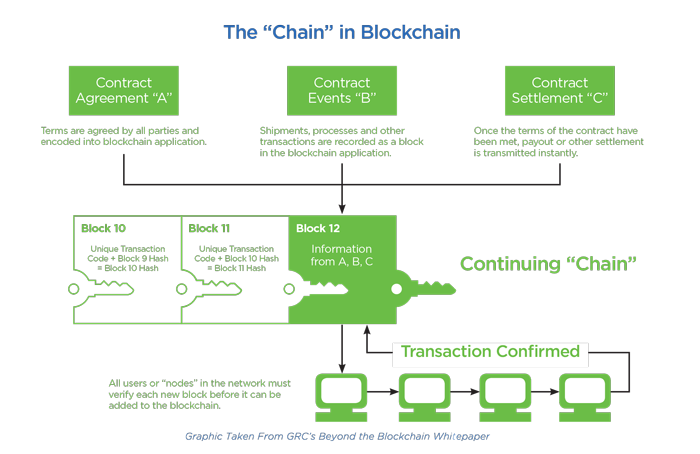Generally, the idea of mining cryptocurrency is already a bit confusing and complicated. But even more so, people on the outskirts of the crypto mining community do not normally think about the different ways there are to mine crypto (which can be even more bewildering). This article will simply highlight the progression and advances in mining technology so you can be a crypto mining expert.
The Beginning of Crypto Mining
In the grand scheme of things, Cryptocurrency hasn’t been around for very long. It’s only been 10 years since the first cryptocurrency, bitcoin, was created. August 2008, the domain name bitcoin.org is registered, and later that month a cryptic person by the name of Satoshi Nakamoto publishes a paper called “Bitcoin: A peer-to-peer Electronic Cash System. The first bitcoin transaction happens on January 12 2009, when Nakamoto sends a computer programmer by the name of Hal Finney 10 bitcoin.
Cryptomining attempts to solve complex mathematical equations that are a part of the blockchain encryption mechanism. The first individual or group to solve these compound algorithms gets rewarded a block. For example, a bitcoin block has 12 bitcoin. Each bitcoin is currently worth over $6,400. The most powerful mining rigs are able to mine the most cryptocurrency.
Next Level Power
Before mining bitcoin was available to the public. The small cryptocurrency community was mining bitcoin from their CPUs. In December of 2009, Nakamoto published a letter that said, “We should have a gentleman’s agreement to postpone the GPU arms race as long as can for the good of the network. It’s much easier to get new users up to speed if they don’t have to worry about GPU drivers and compatibility. It’s nice how anyone with just a CPU can compete fairly equally right now.”
Most people believe that a person with the pseudonym, ArtForz, was the first person to mine bitcoin with GPUs, but there are conflicting stories that have Lazlo Hanyecz actually doing it a couple months before. Artforz is also thought to have used FPGAs and early structured ASICs to mine over 26,000 bitcoins over the course of 9 months.
In 2010, Hanyecz infamously traded 10,000 bitcoins for a couple pizzas. Eight years later, these two pizzas are worth over $8.6 million.
Later that year, the code for mining bitcoin was released to the general public.
In 2011, other cryptocurrencies begin to emerge including Litecoin, Namecoin, and Swiftcoin.
During this time, GPUs were still the most widely used among miners. Normally used for rendering video, animation, and images—the extra processing power was great for mining. It was efficient and fast, but wasn’t as flexible as a CPU, and it also requires more specialized programming to leverage its power, but it is noticeably more powerful on many accounts. It usually contains thousands of cores that are very capable of performing repetitive tasks at a high level. GPU mining rigs are powerful computers that can be modified to mine any cryptocurrency.
Professional Mining Power
Because most people used GPUs to mine crypto, people were looking for faster and more efficient ways to mine the currency. By 2011, Field-Programmable Gate Arrays became more popular.
After a bit of configuration troubleshooting, miners were able to successfully use FPGAs to mine cryptocurrency effectively while using less power.
While, these machines were powerful at the time—mining at a speed of around 25 GH/s—they were also extremely loud, needing massive cooling fans.
FPGAs are quite popular because they can implement any logical function. However, FPGAs need to use software called HDL or Hardware Descriptive Language. This program is used to program the devices including gate arrays and static IP, but having to do it manually has become a burden to many miners. FPGAs are a great way to mine crypto, but it has been hard to compete with modern professional mining rigs. This is where modern ASIC mining rigs come into the picture.
ASIC or Application-Specific Integrated Circuit Miners are known as professional mining computers. FPGA and ASIC systems have many things in common. First off, they are their own form of processing chip. These chips are used specifically to mine cryptocurrency without any other functions. They can both process logic-based operations, and can use power more efficiently than previous CPUs and GPUs. Unlike a GPU mining rig, ASIC miners are designed to solve for one specific algorithm. This can be positive or negative. By narrowing down the algorithm focus,the miner uses less electricity and is usually cheaper than most GPU rigs. ASIC miners will earn more per day than any other system. Here are some examples of the best hashing or mining power from each:
 CPU (Intel i7 2600k) – H/s: 49
CPU (Intel i7 2600k) – H/s: 49
GPU (AMD Radeon 6990 Pro 4GB) – H/s: 84,000
FPGA (Xilinx Spartan6 CM1) – H/s: 1,6000,000
ASIC (KNC Miner Juptier) – H/s: 400,000,000
As you can see, ASIC miners are the most powerful of the lot. Some other good examples of ASIC miners are the Bitmain Antminer S9i and S9i, Antminer S7, AvalonMiner 761, and the WhatsMiner M3.
Cooling Innovations and Costs
The power & cooling costs it takes to mine cryptocurrency is astounding. Because the servers used to mine cryptocurrency are being worked to their maximum capabilities—these servers need the most advanced cooling systems available. Green Revolution Cooling, who patented liquid immersion cooling technology, has seen an incredible growth in sales over the past year. According to Data Center Knowledge, last year, GRC increased their revenue by five times what it had been the past year. Many of these sales can be attributed to the mining of cryptocurrencies, and the launch of their new products GRC’s HashRaQ, designed as a single rack immersion system, and the HashTank, a six-rack immersion system.
Mining cryptocurrency can be very costly with energy expenses alone. For example, Antonio Villas-Boas from Business Insider, put together a small mining rig that can mine 0.0015 bitcoin a day. His small setup has an electricity cost of $5.32 a day or about $1945 a year. He currently makes $4500 in mining each year with a gross of $2555.
GRC’s immersion cooling systems can reduce build-out costs by as much as 50% and lower cooling energy costs by up to 95%. Many people are taking advantage of these numbers and increasing there overall mining profits.
Conclusion: What’s Next?
As long as mining for these algorithms are profitable—people will continue to innovate their rigs to be more powerful. We don’t quite know what the future holds for the cryptocurrency, but for now, it looks promising.
From CPUs to GPUs, and FPGAs to ASICs. Mining is getting more powerful. Along with this—we also see major advancements in the field of server cooling. Immersion cooling systems are allowing miners to hash at speeds that were unthinkable when cryptocurrency mining first came to be.
Michael Isberto is the Blog Director and a Content Writer for Colocation America. He received his B.A. in Communication Studies with an emphasis in Public Relations at CSUSB. Isberto is a Communication professional with additional experience in Public Relations, Marketing, and Social Media.




